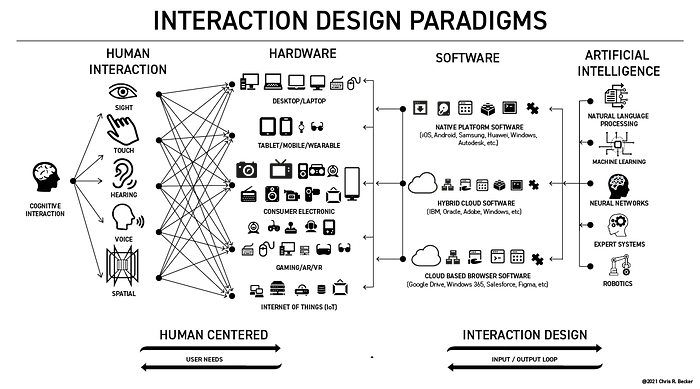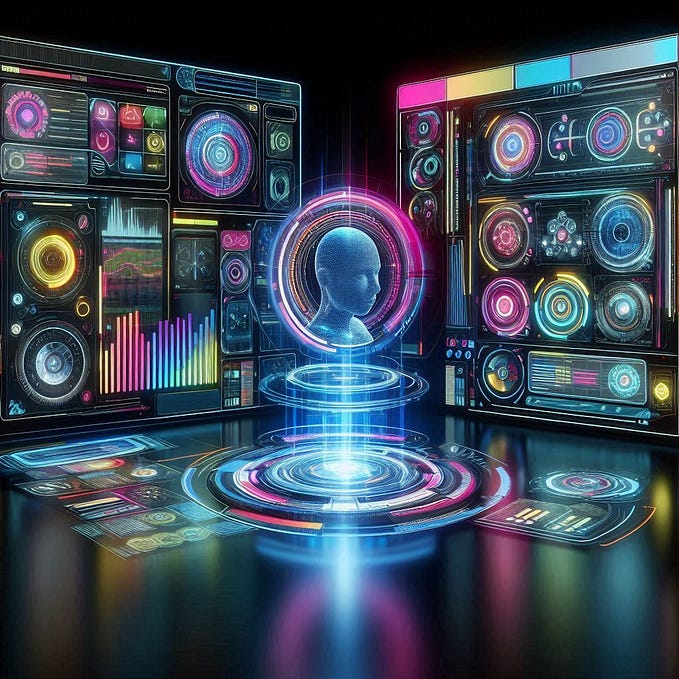Member-only story
A comprehensive list of human-computer interactions
A review of the opportunities with humans, computers, and software.

Whether you are a seasoned Designer (have webmaster in your CV) or new to the world of digital software product design (UXD, UXR, UI, IxD, IA, CX, LX, VD, FE, SO, PO, ML, AI, etc) the universe in which you can apply your craft and skills are continuing to grow. Let’s review the paradigms that construct how we think about, design for, develop in, and deploy software for people all around the globe.
Human interactions options

In 2021, we interact with computers like it is oxygen. At one point not that long ago we did not interact with computers daily; however, humans are quick to invent and quick to adapt to new systems that improve their lives. The computer has been a dominant force in our day-to-day existence, and the ways we interact with computers have changed over time. Computers and software are fundamentally supported by the ways humans can interact with each other in the world.
- Sight: We use our eyes to look at screens or other user interfaces and content to make decisions to execute a task.
- Touch: We use the dexterity in your hands to operate a user interface including buttons, keyboards, and feel haptic (vibrational) feedback, and more from our computer devices.
- Hearing: Sound is used as feedback for usage both in content (music/video) as well as to indicate actions and proprietary sounds of a user interface.
- Voice: We speak to communicate actions, feelings, and commands. Voice interfaces learn these commands and train their users to make specific commands to accomplish tasks.
- Spatial: We move around space both in the world and in terms of our computer systems. Interfaces can respond to macro movements (location on the planet) vs micro-movements waving hands or thumbs up etc to control an interface.
These sensing abilities are thus enhanced and augmented by a computer allow us to see, touch, hear, speak, and move in space with…








